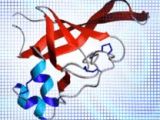How about a screensaver that instead of displaying silly things, is engaged in solving top scientific problems? Well, you can actually get such a 'screen saver' powered by BOINC!. You even have a choice of what kind of scientific problem you would like your computer to be engaged in or you can participate in more projects simultaneously. Here's a short summary (in alphabetical order):
Malaria is responsible for about a million deaths every year in sub-Saharan Africa, and is the single biggest killer in children under five. Africa@home, a project conceived and coordinated by CERN, is recruiting volunteer computers in homes and offices to run a computer-intensive simulation program called MalariaControl.net, developed by researchers at the Swiss Tropical Institute (STI). The MalariaControl.net program is being used to simulate how malaria spreads through Africa. Running the simulations on thousands of volunteer computers will enable researchers to better understand and improve the impact of introducing new treatments.
MalariaControl.net software will do the scientific calculations in the background and the results are regularly returned to a server at the University of Geneva, so that the researchers can evaluate them. Speaking about the results obtained so far, Prof. Tom Smith of the Swiss Tropical Institute said "Africa@home and volunteer computing really open up new horizons for us scientifically. We have already done more epidemiological modeling in a few months than we could have achieved on our own computer cluster in a few years."
This project tries to estimate as accurate as possible how the climate will change during our century and to investigate various possible scenarios. These climate models are so complex that in order to see what their predictions actually are scientists have to run the same model many times, in order to see how sensitive these predictions are to small changes in the initial conditions. These small changes in the initial conditions come from the fact that we cannot determine with infinite accuracy what the present climate conditions are.
"In the past estimates of climate change have had to be made using one or, at best, a very small ensemble (tens rather than thousands!) of model runs. By using your computers, we will be able to improve our understanding of, and confidence in, climate change predictions more than would ever be possible using the supercomputers currently available to scientists."
Another part of this project is the Seasonal Attribution Project which attempts to determine what impact human activities have on the climate:
"Recent extreme weather events have prompted the debate about effects of human activity on the world's climate. Now you can help us to determine the extent to which extreme weather events like the United Kingdom floods of Autumn 2000 are attributable to human-induced climate change. We invite you to download and run high-resolution model simulations of the world's climate on your own computer. By comparing the results of these simulations, half of which will include the effects of human-induced climate change, and half of which will not, we will investigate the possible impact of human activity on extreme weather risk."
This project is searching for the gravitational waves caused by spinning neutron stars (also called pulsars) using data from the LIGO and GEO gravitational wave detectors. This is done in order to test the general theory of relativity which predicts that such waves should exist. Moreover, "the detection of gravitational waves from pulsars would provide a new means to discover and locate neutron stars, and might eventually provide unique insights into the nature of matter at high densities." And, of course, "Einstein@Home could also discover something completely unexpected!"
But, what do they need your computer for? Their problem is that the gravitational waves are very faint and, even with their highly precise measurement devices, they are hard to discern from background noise. In principle, it's easy to discern the signal from noise, because the noise is random. In practice, for determining what is random and what is not random in the measured signal, they have to analyze the signal for a sufficiently long amount of time. But this necessitates large computing power - and this is why they need the computers of as many people as possible.
"Reactions between molecules are important for virtually all parts of our lives. The structure and reactivity of molecules can be predicted by Quantum Chemistry, but the solution of the vastly complex equations of Quantum Theory often requires huge amounts of computing power. In our project we want to raise the necessary computing time to further develop the very promising Quantum Monte Carlo (QMC) method for general use in Quantum Chemistry."
This place is ideal if you are a fan of chemistry and want to do things in the most fundamental way possible - i.e. go all the way to quantum level.
LHC is the most powerful particle accelerator ever built. Particles accelerators are used to smash particles in order to see what happens. This helps physicists learn about the fundamental building blocks of the Universe and in the same time about the conditions in the early Universe immediately after the Big Bang. On the other hand, they build models trying to predict what will happen if you smash a with b at such and such speeds. So, if you lend the idle time of your computer to the CERN physicists they will use it to simulate particle collisions inside their accelerator.
This project aims at predicting protein structure from protein sequence. Proteins are large molecules essential to virtually everything that happens in any living creature. They are constructed out of a linear sequence of amino-acids, the recipe for this sequence being encoded in DNA. But this linear sequence doesn't remain linear - as it is constructed it folds into a complex three-dimensional structure and it is this complex structure that determines the function (or the dysfunction) of the protein. But determining the complex structure knowing the amino-acid sequence isn't exactly easy. The models predicting the 3D structure are very complex - and here is where your computer could enter the picture.
"Our work is aimed at testing and evaluating new algorithms and methods of protein structure prediction. ... Our goal is to utilize these approaches together with the immense computer power that can be harnessed through the internet and volunteers all over the world (you!) to address critical biomedical questions of protein-related diseases."
This project has a real medical significance and you could literally help advancing the understanding of various diseases.
"...needs your help to determine the 3-dimensional shapes of proteins in research that may ultimately lead to finding cures for some major human diseases. By running the Rosetta program on your computer while you don't need it you will help us speed up and extend our research in ways we couldn't possibly attempt without your help. You will also be helping our efforts at designing new proteins to fight diseases such as HIV, Malaria, Cancer, and Alzheimer's"
So, if you want to help the design of better drugs this is the place to go.
Do you want to search for aliens? Or at least for radio signal from aliens? This is the place for you. You can participate by running a program that downloads and analyzes radio telescope data. The point is to try to see whether this data is hundred percent random noise or if there are some hidden messages that your computer could find. This is similar to the Einstein@Home project, but the purpose and the data set are different.
This project is also focused on proteins. But instead of trying to determine exactly how proteins fold, their approach is to compare different amino-acid sequences. They are trying to jump over the step of protein folding and determine the connection between the sequence of amino-acids and their function by comparing various proteins to each other. The Predictor@home project analyzes each protein in itself. So, this project is the bird's eye view, while the Predictor@home is the magnifying glass view.
This project is also relevant from an evolutionary perspective because the genes which are inherited from generation to generation even for millions of years are encoding these amino-acid sequences. So you could find out at the most fundamental level, that of the gene, what changed and what remained unchanged during evolution.
"Today, protein sequence comparison is the most powerful tool in computational biology for characterizing protein sequences because of the enormous amount of information that is preserved throughout the evolutionary process. SIMAP is a public database of pre-calculated protein similarities that plays a key role in many bioinformatics methods. It contains about all currently published protein sequences and is continuously updated. The computational effort for keeping SIMAP up-to-date is constantly increasing. Please help to update SIMAP by calculating protein similarities on your computer. The computing power you donate supports manifold biological research projects that make use of SIMAP data."
"Prof. Arthur J. Olson's laboratory at The Scripps Research Institute (TSRI) is studying computational ways to design new anti-HIV drugs based on molecular structure. It has been demonstrated repeatedly that the function of a molecule - a substance made up of many atoms - is related to its three-dimensional shape. Olson's target is HIV protease, a key [protein] of the virus that, when blocked, stops the virus from maturing. These blockers, known as 'protease inhibitors', are thus a way of avoiding the onset of AIDS and prolonging life. The Olson Laboratory is using computational methods to identify new candidate drugs that have the right shape and chemical characteristics to block HIV protease. [...]
Scientists are able to determine by experiment the shapes of a protein and of a drug separately, but not always for the two together. If scientists knew how a drug molecule fit inside the active site of its target protein, chemists could see how they could design even better drugs that would be more potent than existing drugs.
To address these challenges, World Community Grid's FightAIDS@Home project runs a software program called AutoDock developed in Prof. Olson's laboratory. AutoDock is a suite of tools that predicts how small molecules, such as drug candidates, might bind or 'dock' to a receptor of known 3D structure. [...] AutoDock is used on the World Community Grid to dock large numbers of different small molecules to HIV protease, so the best molecules can be found computationally, selected and tested in the laboratory for efficacy against the virus, HIV."
So in this project, your computer could simulate what happens when a yet un-synthesized drug interacts with the HIV virus, and if the result of the simulation is promising scientists will then actually synthesize the drug and test its efficiency. This way a much larger number of potential drugs can be analyzed.
The World Community Grid also has other similar projects: "[Our] mission is to create the largest public computing grid benefiting humanity. Our work is built on the belief that technological innovation combined with visionary scientific research and large-scale volunteerism can change our world for the better. Our success depends on individuals - like you - collectively contributing their unused computer time to this not-for-profit endeavor."

 14 DAY TRIAL //
14 DAY TRIAL // 








